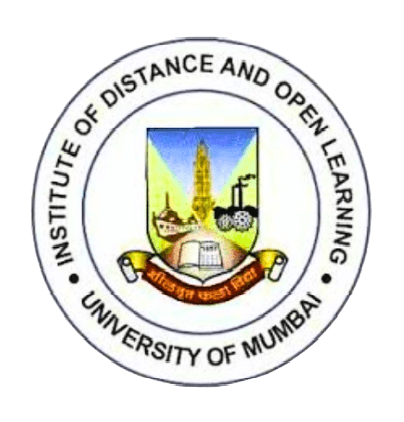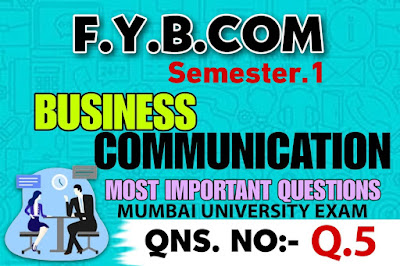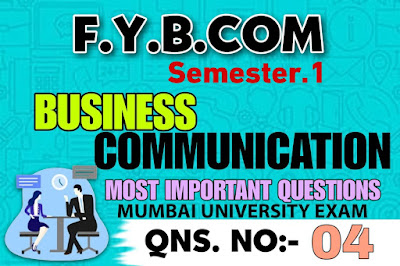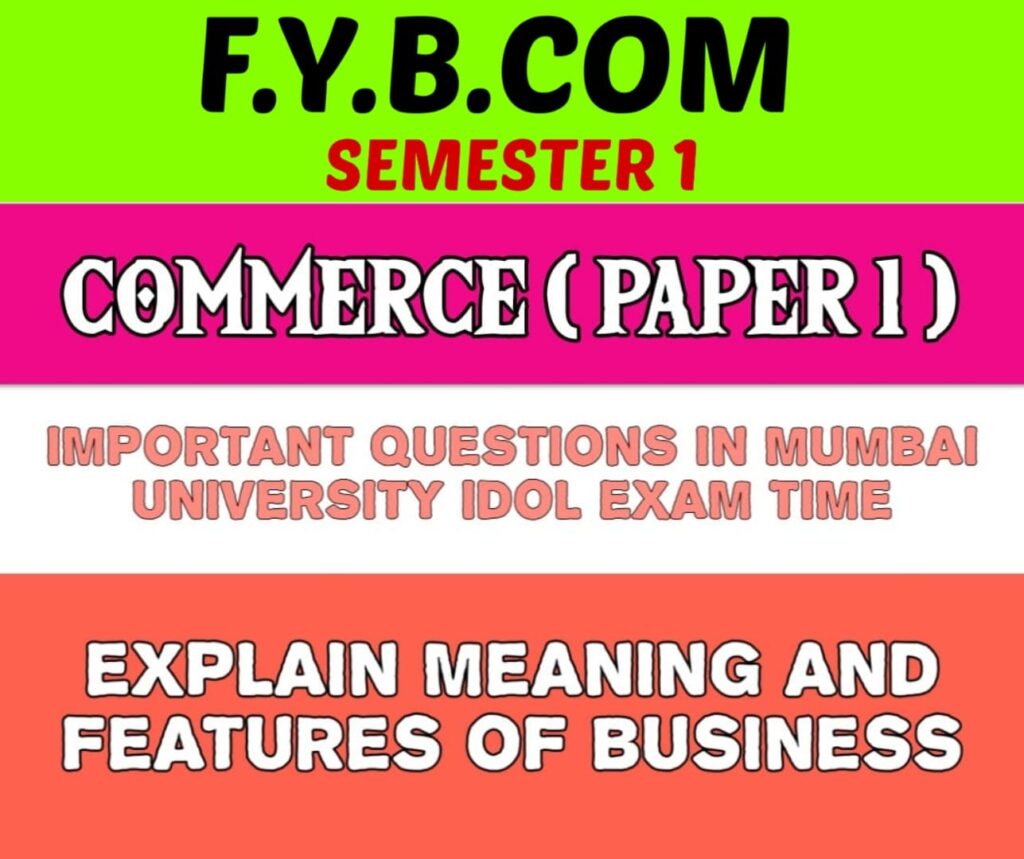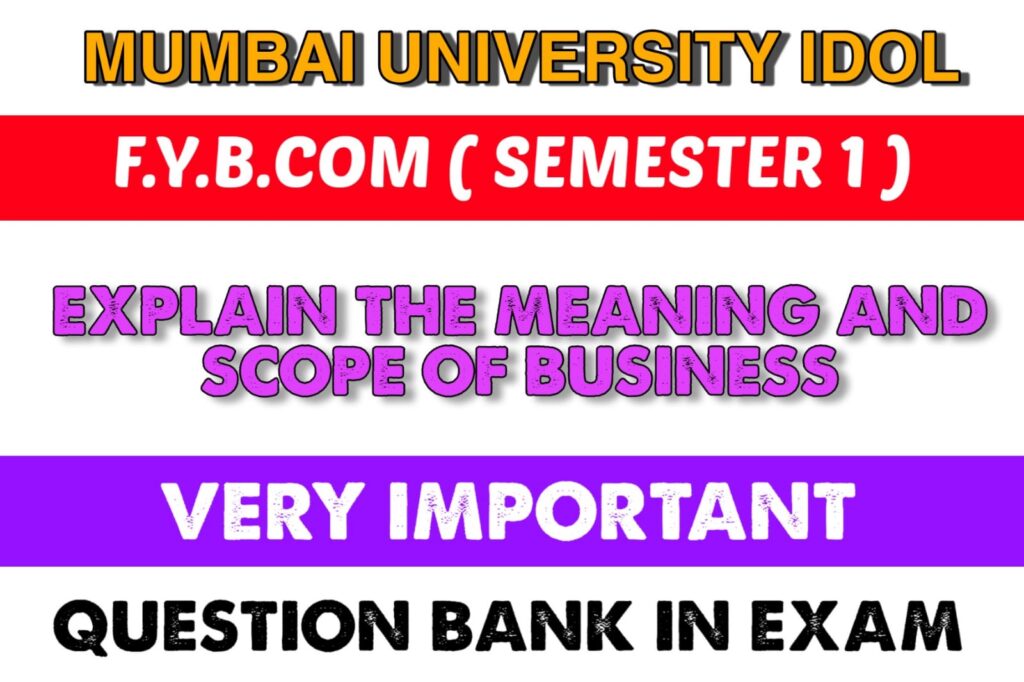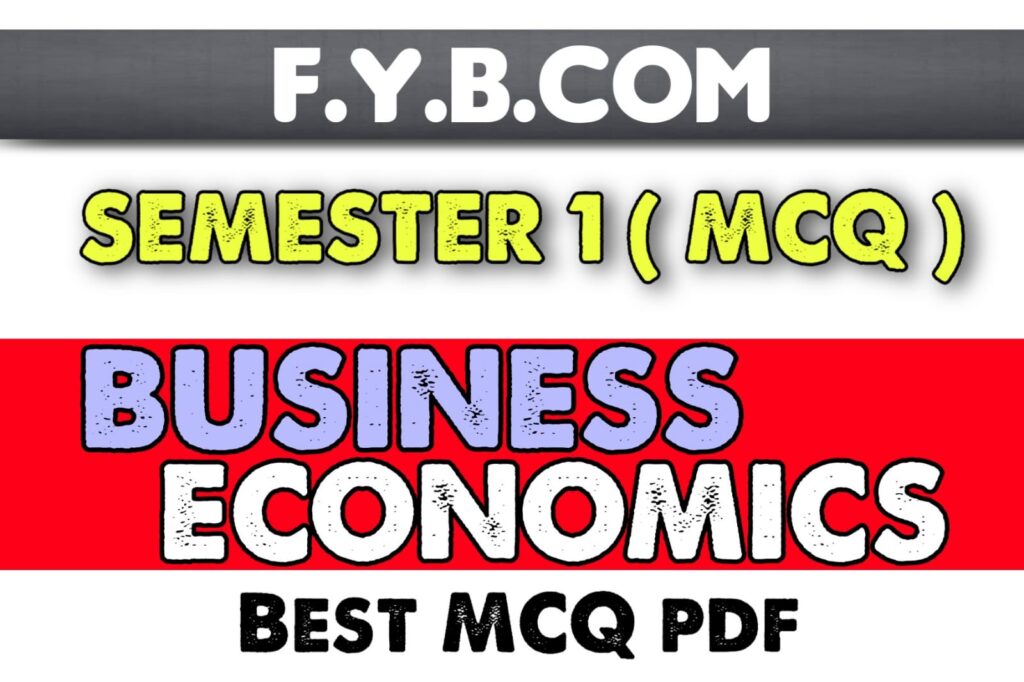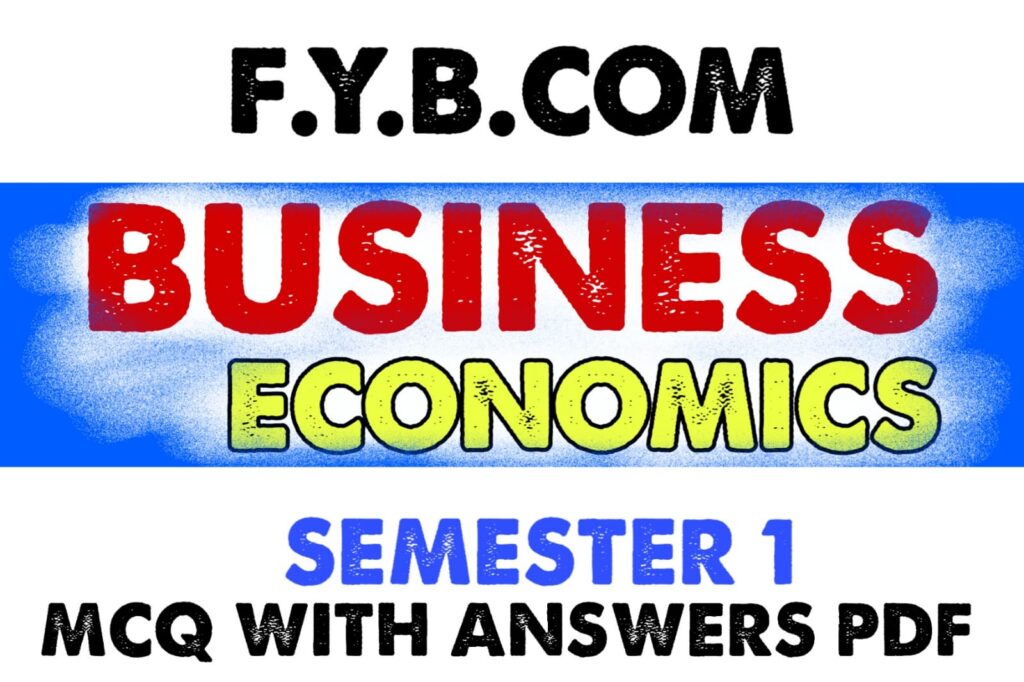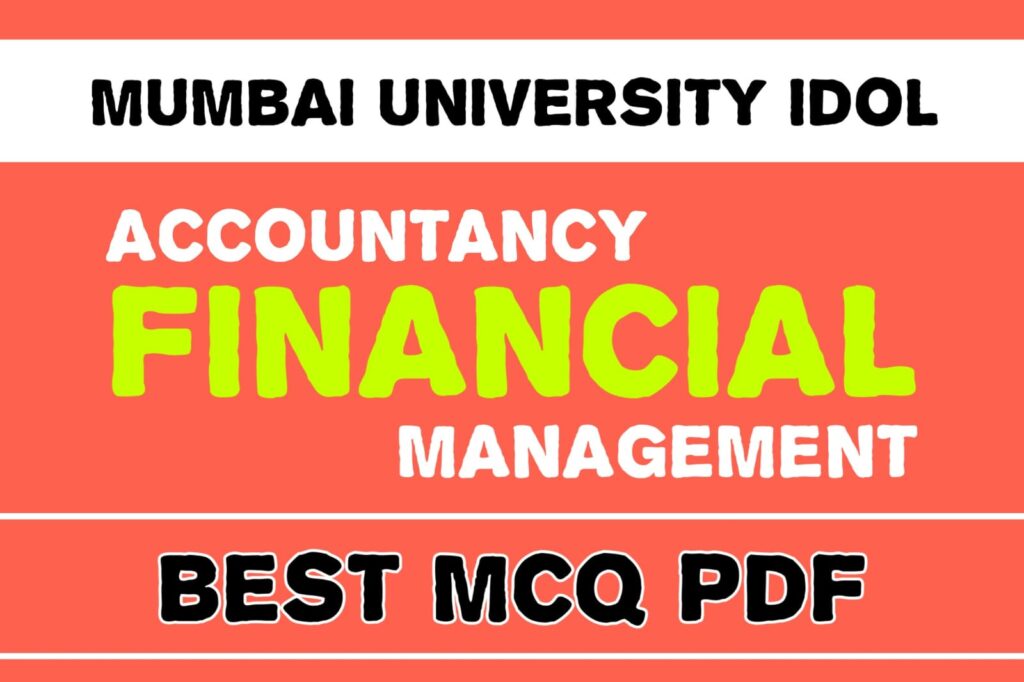fybcom syllabus mumbai university | fybcom semester 2 question paper
F.Y.B.Com Semester II Business Economics II Q.4 Discuss the long run equilibrium of the firm under perfect competition. ANS: The long run is a period of time which is sufficiently long to allow the firms to make changes in all factors of production. Therefore, it is said that in the long run, all factors of production are variable and no factors are fixed. So in the long run the firms, can increase or decrease their output by changing their capital equipment; they may expand or contract their old plants or replace the old lower-capacity plants by the new higher-capacity plants or add new plants in the business or the firms can contract their output level by reducing their capital equip-ment; they may allow a part of the existing capital equipment to wear out without replacement or sell out a part of the capital equipment Besides, in the long run, new firms can enter the industry to compete the existing firms. Moreover, the firms can leave the industry in the long run. The long-run equilibrium then refers to the situation when free and full adjustment in the capital equip-ment as well as in the number of firms has been allowed to take place. It is therefore long-run average and marginal cost curve which are relevant for deciding about equilibrium output in the long run. Moreover, in the long run, it is the average total cost which is of determining importance, since all costs are variable and none fixed. As explained above, a firm is in equilibrium under perfect competition when marginal cost is equal to price i.e. MC = P. But for the firm to be in long-run equilibrium, besides marginal cost being equal to price, the price must also be equal to average cost (P = MC). For, if the price is greater or less than the average cost, there will be tendency for the firms to enter or leave the industry. If the price is greater than the average cost, the firms will try to earn more than normal profits. These supernormal profits will attracts the new firms to enter into the industry. With the entry of new firms in the industry, the price of the product will go down as a result of the increase in supply of output and also the cost will go up as a result of more intensive competition for factors of production will be generated. The firms will continue entering the industry until the price is equal to average cost so that all firms are earning only normal profits. These can be explained with the help of the following Diagram 9.5 given below: Diagram 1.5 represents the equilibrium condition of firm under perfect competition. The firm in the long-run equilibrium is at a price OP and quantity of output is OQ where the equilibrium point is E. at the equilibrium point MR = MC. As said the firm earns normal profit in the long run so, Profit = TR- TC = OQEP – OQEP Therefore, the firm earns normal profit in the long run where, P= AR= MR= AC= MC. If you want exam most important question bank pdf then you have to pay per subject 100/- rupees only . Contact 8652719712 / 8779537141 Telegram Group Mumbai Univeersity :- https://t.me/mumbaiuniversityidol Suraj Patel Education :- https://t.me/surajpateleducation F.Y.J.C EXAM :- https://t.me/FYJCexam S.Y.J.C EXAM :- https://t.me/SYJCexam F.Y EXAM :- https://t.me/fyexam S.Y EXAM :- https://t.me/syexam T.Y EXAM :- https://t.me/tyexam M.Com Part 1 EXAM :- https://t.me/McomPart1Exam M.Com Part 2 EXAM :- https://t.me/McomPart2Exam M.A EXAM :- https://t.me/mastudentsexam YouTube Channel https://www.youtube.com/channel/UCv8JIY58xfWHUIXVu9wxNHw
